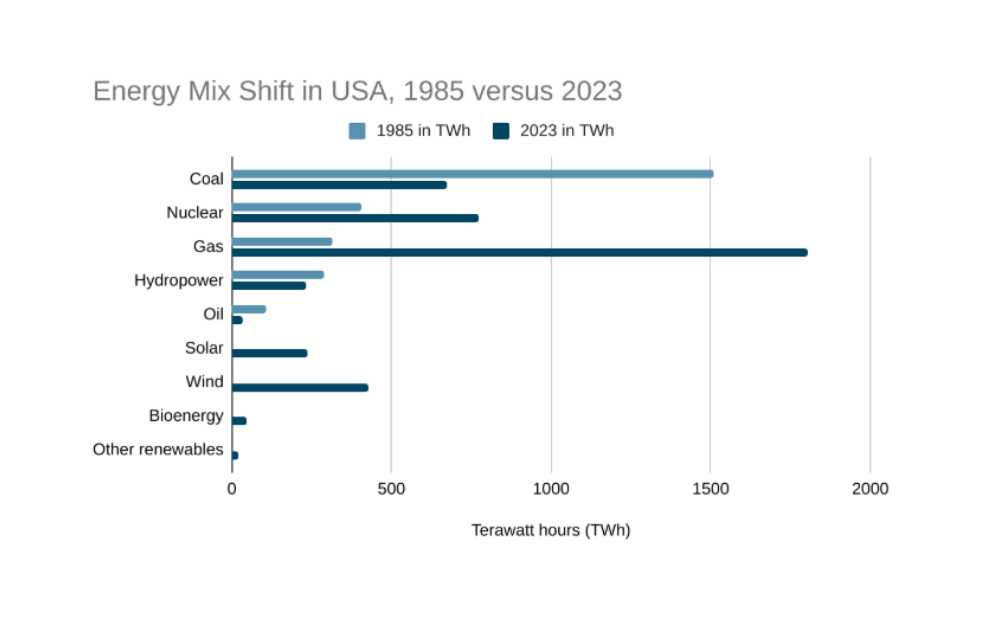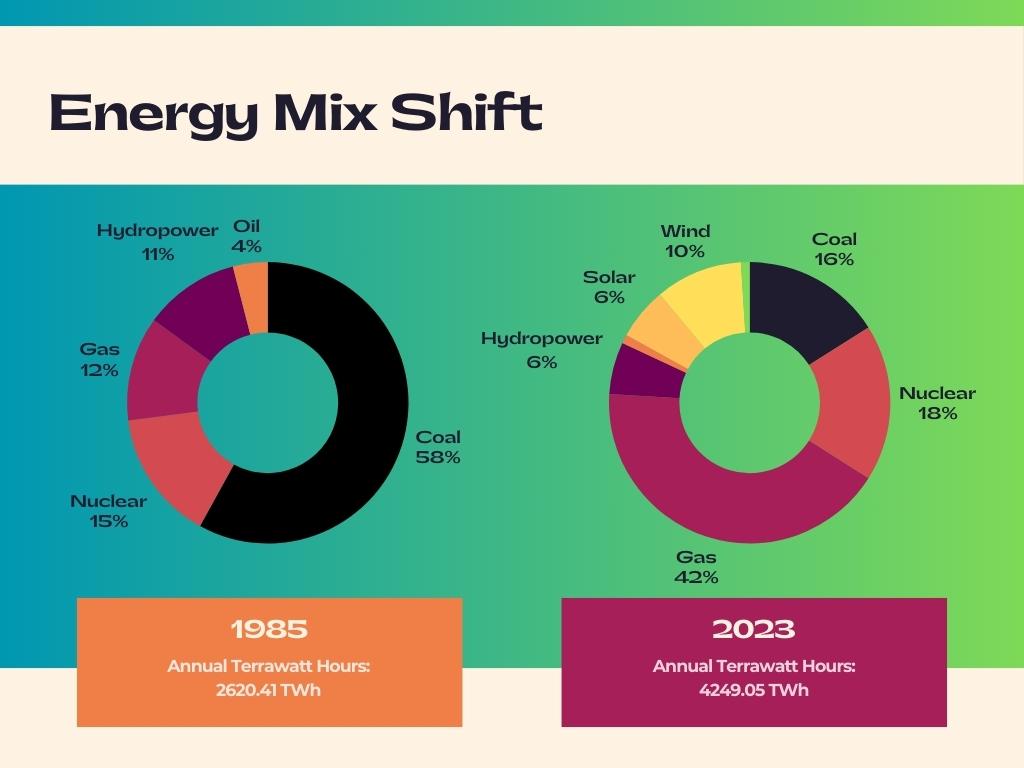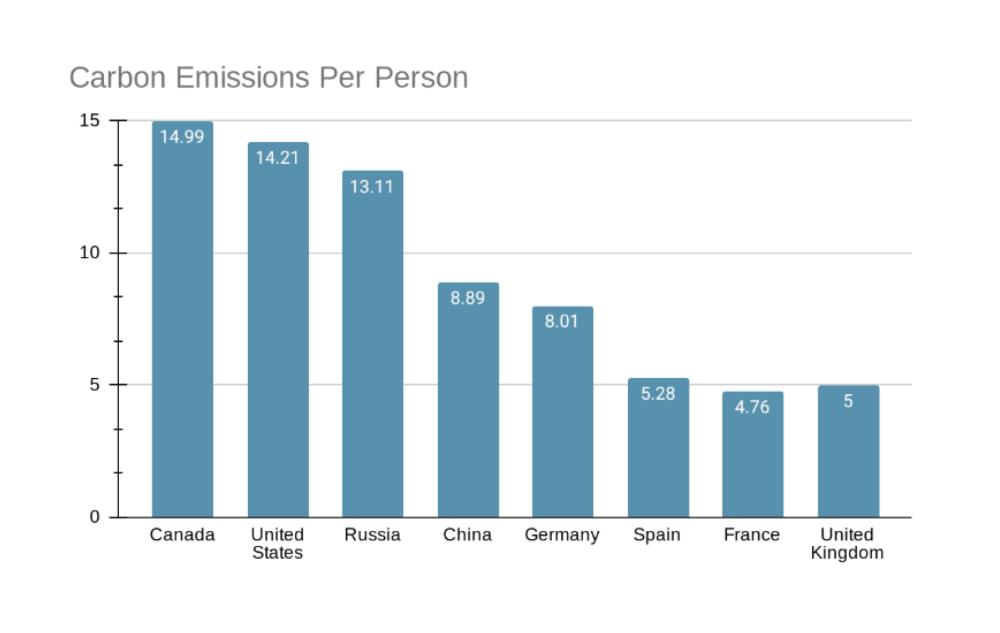The United States has been working to transition to renewable energy sources like solar and wind for the last several years. While there’s been significant growth in renewable energy generation, these new projects are straining to meet rising energy demands. In this article, we’ll explore current energy trends and dive into energy production across America. We’ll also look at US cities and grassroots movements that are leading the way in energy transitions.
Energy demands are reaching record highs.
Global energy demand has experienced significant growth in recent years, driven by various factors including economic expansion and technological advancements. In 2023, global energy consumption increased by 2.2%, surpassing the average annual growth rate of 1.5% observed between 2010 and 2019. This surge is largely attributed to heightened industrial activities and increased energy usage in emerging economies.
Electricity demand, in particular, is projected to rise substantially. The International Energy Agency forecasts that global electricity consumption will grow at an annual rate of nearly 4% through 2027. This growth is propelled by the proliferation of data centers (think: AI, cryptocurrency mining, and storage) and electric vehicles. The expansion of air conditioning usage due to rising temperatures is another contributor to growing demand. Power sources are increasingly affected by wildfires and extreme weather events that reduce efficiency.
This anticipated growth underscores the escalating need for robust and sustainable energy infrastructure to meet rising demands. Growing energy demands also imperil the Paris Agreement’s goal to achieve global net-zero emissions by 2050.

Globally, Norway and Iceland lead the way in renewable energy transitions.
Some countries have made remarkable progress in the renewable energy transition. Norway stands out, with about 98.3% of its electricity production coming from renewable sources, primarily hydroelectric power. Iceland achieves nearly 100% renewable energy generation thanks to its abundant geothermal and hydroelectric resources.
How America Creates Energy
The transition to clean energy across the United States is accelerating, with cities and states adopting ambitious policies to reduce their reliance on fossil fuels. The map below shows which percentage of each state’s energy generation comes from coal, hydro, natural gas, nuclear, solar, and wind energy. Many of these states have implemented policies to expand solar and wind power, electrify public transportation, and incentivize businesses and residents to adopt renewable energy sources.
The deeper the color of the state, the more energy (both non-renewable and renewable) that state produces.
Cities on the West Coast and in the Northeast have been early adopters of clean energy policies. Momentum is growing in the Midwest and Southern states, but the pace of transition varies, with factors such as policy support, funding availability, and infrastructure readiness influencing progress. The map underscores how urban centers are playing a critical role in leading the country’s clean energy transformation. Their progress demonstrates how local governments and communities can drive meaningful environmental change even in the absence of federal mandates.
America’s Evolving Energy Transitions
In the United States, we’ve seen a significant shift in energy sources, as coal, once the dominant energy source, is phased out. Coal has seen a 42% reduction in recent years. For the first time in 2024, wind and solar together produced more energy than coal. Note, however, that since 1985, the United States has become more reliant on natural gas – to meet our energy needs.

Note: Terrawatt hour (Twh) is a unit of energy representing one trillion watt-hours. It measures the amount of produced energy, electricity, and heat.

Source: Our World in Data
Now consider this second map, which shows the percentage of total energy generated from renewable sources. The greener the state, the higher the percentage of renewable energy sources.
Community Renewable Energy Projects: Empowering Local Initiatives
Community renewable energy projects enable local groups to develop, own, and benefit from renewable energy installations. These initiatives often focus on harnessing local resources such as solar, wind, or hydroelectric power to meet the specific energy needs of their communities. By doing so, they enhance local resilience, reduce energy costs, and contribute to global sustainability goals.
Here are some notable U.S. cities and communities that have set ambitious goals and implemented policies to shift toward renewable energy:
- Burlington, Vermont: In 2014, Burlington became the first U.S. city to source 100% of its electricity from renewable sources, including wind, solar, hydroelectric, and biomass. Since then, these five other US cities have joined Burlington in achieving 100% renewable energy sources.
- San Antonio, Texas: Demonstrating leadership in municipal sustainability, San Antonio launched a $30 million solar energy project in 2024. This initiative aims to install solar panels on city-owned properties, reducing electricity consumption in municipal buildings by 11% and cutting carbon dioxide emissions by approximately 12,855 metric tons.
- Bryant, Ann Arbor, Michigan: Once an energy-burdened community, Bryant has transformed into America’s first carbon-neutral neighborhood through energy upgrades such as improved insulation and solar panel installations. These improvements have significantly reduced utility bills and enhanced the quality of life for residents, showcasing the impact of grassroots initiatives on sustainability.
- Boone and Lincoln counties, West Virginia: Once a heavy producer of coal, West Virginia has committed to diversifying its energy portfolio. One notable project is the transformation of the 5,800-acre former Hobet Mine into a solar field, which will also serve mixed purposes, including industry, lodging, recreation, and hospitality. This project exemplifies how energy transitions can benefit both the environment and the local community.
The ACEEE’s Clean Energy Scorecards document progress for large and mid-size metros.
The American Council for an Energy-Efficient Economy (ACEEE) tracks the progress of U.S. cities with their annual scorecard. The 2024 City Clean Energy Scorecard revealed the top 10 most energy-efficient cities: San Francisco, Denver, Seattle, Los Angeles, Oakland, Minneapolis, New York, Portland (Oregon), San Jose, and Washington, D.C. Honorable mentions to Miami and New Orleans, who have shown notable improvement with new stormwater management policies and efforts to reduce municipal carbon footprints, respectively.
There’s also a separate scorecard for midsize metros (Madison, Wisconsin ranks highest!). The ACEEE scorecard is a great resource to see what’s happening in your city and how you can get involved. Check out the ACEEE database here to discover the energy efficiency of a city near you.
Company Sustainability Reports (CSRs) and Science-Based Target Initiatives (SBTIs) document a company’s sustainability efforts and goals.
Much like the ACEEE’s scorecards, each company is required to release Company Sustainability Reports (CSRs) to document their sustainability efforts. You can typically find a company’s CSRs on their website (check sections like “About Us” or “Investor Relations”). CSRs show what a company has achieved, whereas Science-Based Targets Initiative (SBTI) reports offer valuable information about where a company is headed. Launched in October 2021, SBTI sets the first net-zero standard for corporations, helping businesses establish credible, science-aligned net-zero targets. Many large tech companies, such as Google, Apple, IBM, Microsoft, and Amazon, are significant energy consumers but are also working to reduce their environmental footprints.
Despite renewable energy efforts, America’s carbon emissions are still too high.
While progress is being made, the United States remains a major environmental polluter. Our per capita CO2 emissions are significantly higher than most other countries, including the European nations. The U.S. does not have a formal net-zero plan in place (see Net-Zero Tracker).

Source: Worldometer
Of the 198 nations that are globally tracked, the U.S. is one of 56 without a plan. However, sustainable efforts are emerging from cities, communities, businesses, and individuals. Currently, 38 U.S. cities have policies or pledges in place, and 289 companies have committed to achieving net-zero CO2 emissions.
Local efforts and grassroots initiatives are more important than ever.
This highlights the importance of grassroots action. The One Planet Life community is making sustainable changes every day. It’s a reminder that local efforts matter. While challenges remain, there’s a lot of positive change happening! We need to focus on the progress being made by states, cities, communities, and individuals, while remaining aware of the obstacles we still face.
Grassroots Efforts Driving Clean Energy Adoption
Grassroots organizations and community initiatives play a pivotal role in advancing clean energy at the local level:
- Solar United Neighbors (SUN): Founded in 2007, SUN organizes solar co-ops, enabling homeowners to collectively purchase and install solar panels, thereby reducing costs and increasing accessibility to renewable energy.
- Power Shift Network: This youth-led organization comprises over 90 environmental and social justice groups working collaboratively to promote clean energy and climate justice across the United States.
- Community Solar Projects: Community solar initiatives allow individuals and businesses to subscribe to local solar installations, providing access to renewable energy for those unable to install panels on their properties. As of early 2025, the U.S. boasts approximately 6.5 gigawatts of community solar capacity, with projections to double by 2028.
Your small actions matter in the fight for our planet.
As part of the One Planet Life community, you can continue making joyful changes to reduce your footprint. Our community has already reduced 49 tons and counting! You can also support local businesses and your community in their energy transition efforts. For larger businesses you frequently shop with, check their CSR to see if their sustainability efforts align with your values. We can all work together to ensure our communities have access to energy in a way that doesn’t harm the planet.
The collective efforts of U.S. cities and grassroots organizations are instrumental in driving the nation’s transition to clean energy. By setting ambitious goals, implementing innovative projects, and empowering communities, these initiatives contribute significantly to a sustainable and resilient energy future.











